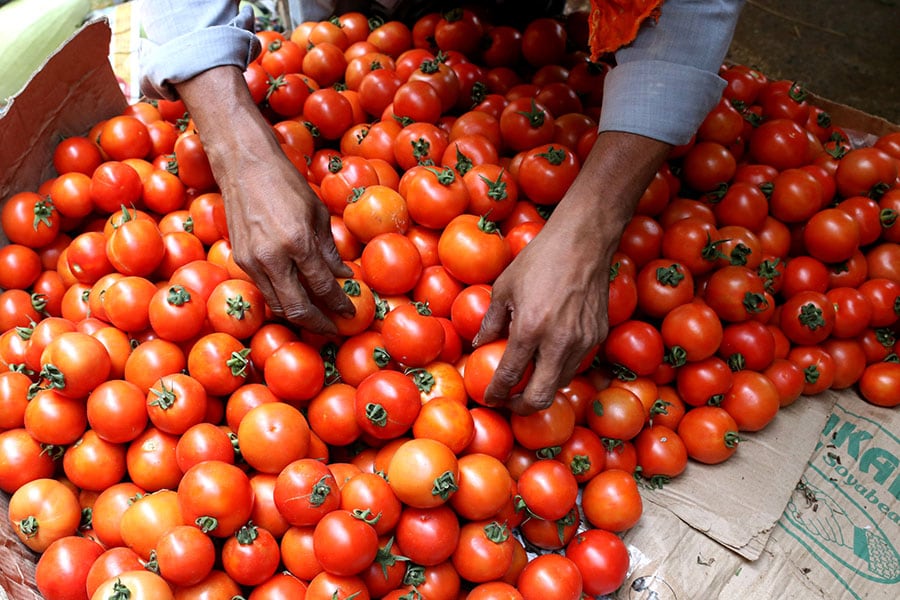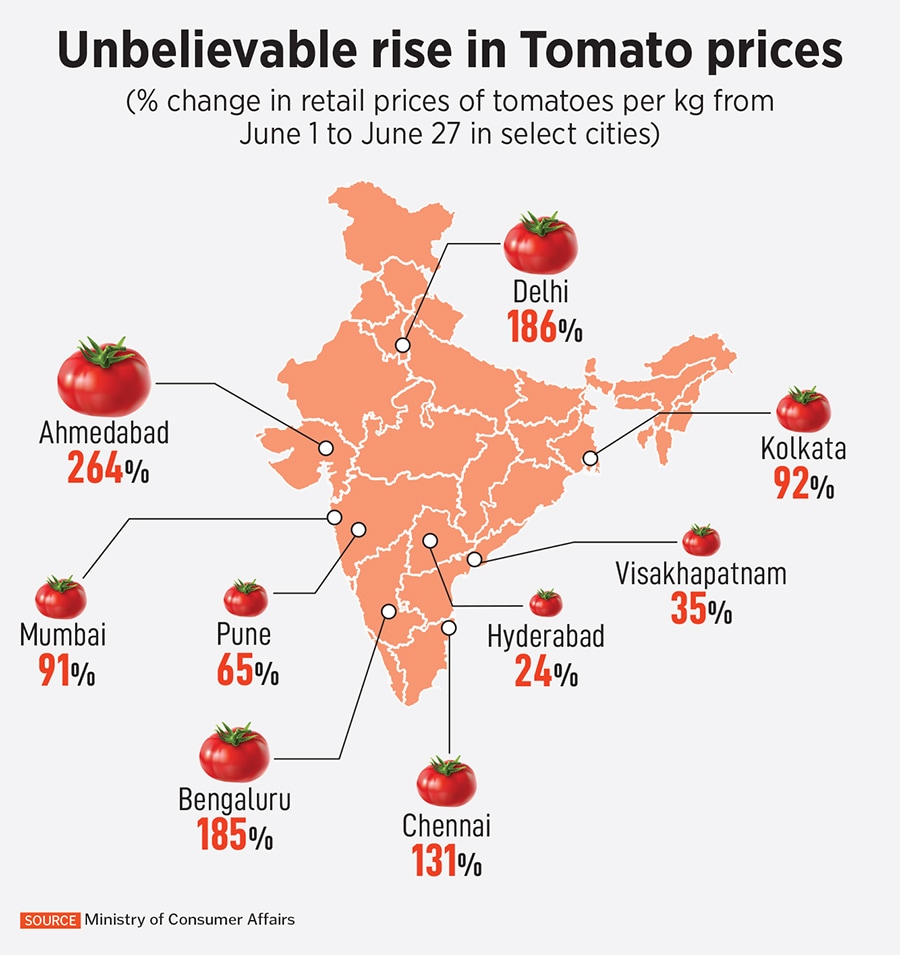
Explained: The reasons behind skyrocketing tomato prices
Retail tomato prices have seen a significant jump, reaching close to Rs 155/kg in major cities, primarily due to the disruption in supply caused by heavy rainfall in the tomato-producing regions
 Rise in tomatoes prices has had a profound effect on countless households. Image: Debajyoti Chakraborty/NurPhoto via Getty Images
Rise in tomatoes prices has had a profound effect on countless households. Image: Debajyoti Chakraborty/NurPhoto via Getty Images
You must have heard of gold being stolen, or cash, or assets. However, in Karnataka, a woman farmer alleged that tomatoes worth Rs 2.5 lakh, accounting for 50-60 bags, were stolen from her agricultural farm on the night of July 5, according to a report in The Indian Express.
This is due to a sudden increase in retail tomato prices. In Delhi and Chennai, tomatoes were priced at Rs110/kg and 117/kg, respectively. The highest was recorded at Siliguri in West Bengal—with 1 kg of tomato costing Rs 155. The average all-India retail price of tomatoes is at Rs 83.29/kg, with a modal price of Rs 100/kg, as per data maintained by the consumer affairs ministry.
According to the Price Monitoring Cell, Ministry of Consumer Affairs, Food and Public Distribution, tomato prices almost doubled in several Indian cities in June, with cities like Ahmedabad and Delhi seeing a jump of 264 percent and 186 percent, respectively.

Tomatoes are a staple among many states in India, especially the southern states. This rise in prices has had a profound effect on countless households, placing a financial burden on their budgets or forcing them to reduce their tomato consumption.





